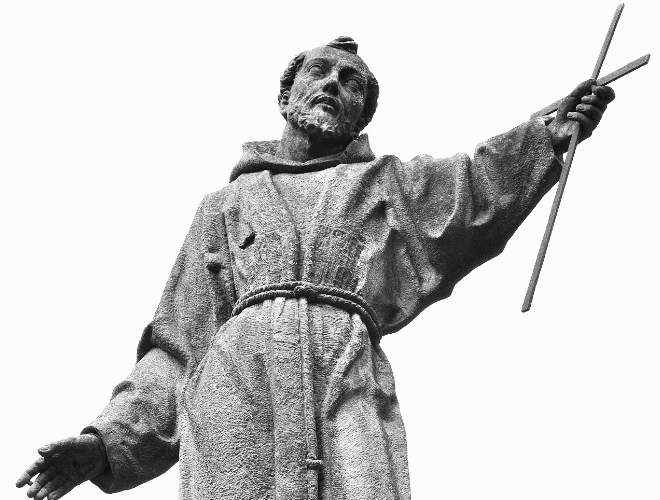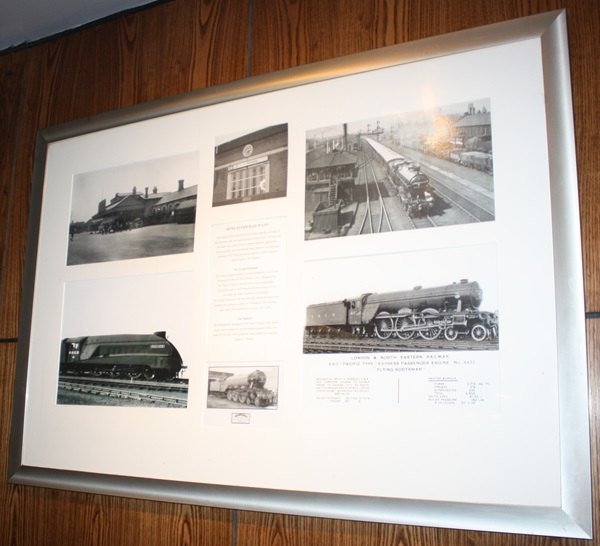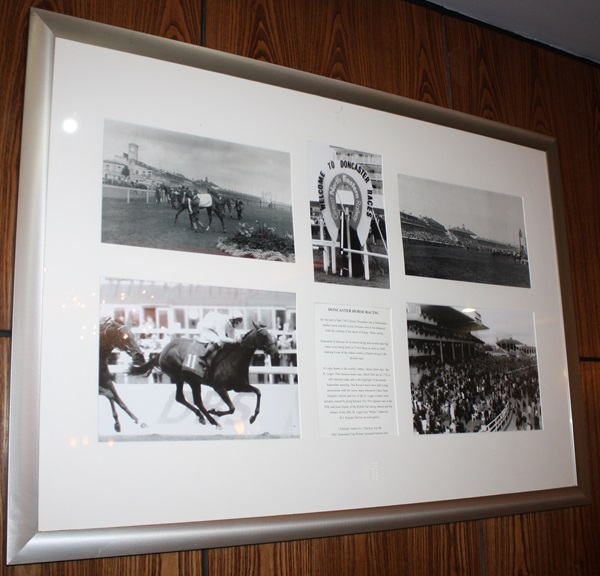Pub history
The Gate House
This Wetherspoon pub is part of the Forum Centre, on the site of the gatehouse to a medieval friary.

This Wetherspoon pub is part of the Forum Centre, on the site of the gatehouse to a medieval friary.
Framed photographs and text about Doncaster racing
The text reads: By the turn of the 17th century, Doncaster was a fashionable market town, and the town’s fortunes were to be enhanced with the coming of the Sport of Kings – horse racing.
Doncaster is famous for its horse racing, and records state that races were being held on Town Moor as early as 1600, making it one of the oldest centres of horse racing in the British Isles.
It’s also home to the world’s oldest classic horse race – the St Leger. This famous horse race, which first ran in 1776, is still running today and is the highlight of the annual September meeting. The Royal Family have had a long association with the races; many Monarchs have been frequent visitors, and two of the St Leger winners were actually owned by King Edward VII. This famous race is the fifth and final classic of the British flat racing season, and the winner of the 2001 St Leger was ‘Milan’, ridden by MJ Kinane (shown on wall panel).
‘Alleluia’ ridden by J Mackay was the 2001 Doncaster Cup Winner (pictured bottom left).
Framed photographs and text about Doncaster railways

The text reads: The impact of the Industrial Revolution and the coming of the railways saw the rapid growth of Doncaster. Situated on the main line of the Great Northern Railway and with a railway works which produced many famous locomotives, including The Flying Scotsman and the world’s fastest steam engine, The Mallard.
The Flying Scotsman
This famous engine made its debut appearance out of the Doncaster Works on 7 February 1923. Designed by Sir Nigel Gresley, it was the first express passenger locomotive and in 1928 became the first train to do a non-stop run from London to Edinburgh. In 1934, The Flying Scotsman was also the first steam locomotive to authentically achieve a speed of 100mph, during a high-speed test run between London and Leeds.
The Mallard
Also designed by Sir Nigel Gresley, this steam engine was to achieve a record-breaking speed with a run made on 3 July 1938, when the train achieved a maximum speed of 126mph.
A painting entitled The Corn Exchange – Market Day by Neil McGregor
External photograph of the building – main station entrance








